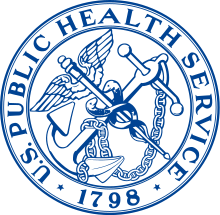The United States (U.S.) Cadet Nurse Corps (CNC) for women was authorized by the U.S. Congress on 15 June 1943 and signed into law by president Franklin D. Roosevelt on 1 July. The purpose of the law was to alleviate the nursing shortage that existed before and during World War II. The legislative act contained a specific provision that prohibited discrimination based upon race, color, or creed. The United States Public Health Service (USPHS) was named the supervisory agency; it was answerable to Thomas Parran, Jr. the surgeon general of the United States. The USPHS established a separate division to administer the CNC program and Parran appointed Lucile Petry a registered nurse (RN) as its director.
The program was open to all women between the ages of 17 and 35 who were in good health and had graduated from an accredited high school. Nearly every type of media source advertised for the CNC. All state nursing schools in the U.S. were eligible to participate in the program; they were, however, required to be accredited by the accrediting agency in their state and be connected with a hospital that had been approved by the American College of Surgeons. The participating schools of nursing were required to compress the traditional 36-month nursing program into 30 months, and they were obligated to provide students with the clinical experiences of medicine, surgery, pediatrics, and obstetrics.
The cadets came from locations across the nation and from all backgrounds. The CNC allowed young women to serve their country in uniform while being protected by law against discrimination. Of the 1,300 schools of nursing in the country, 1,125 participated in the program. The CNC operated from 1943 until 1948; during this period 179,294 student nurses enrolled in the program and 124,065 of them graduated from participating nursing schools. The American Hospital Association credited the cadet student nurses with helping to prevent a collapse of civilian nursing in the U.S. during World War II.
